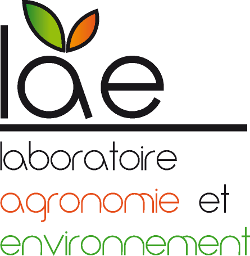Towards stopping pesticides: survey identification of on-farm solutions
Résumé
Context and purpose of the study – The winegrowing sector consumes a lot of pesticides. Changes in vineyard are necessary in order to reduce or even stop using pesticides, and thus limit their harmful impacts on health and on environment. To answer these issues, the VITAE project (2021-2026) aims at designing pesticide free grapevine systems in France. For that, we take an interest in the vineyards using solutions to strongly reduce chemicals but also biopesticides. We assume that such vineyards exist and that they are implementing solutions that could inspire the design of free- pesticide system. Thus the objective of this study was to identify solutions implemented in commercial vineyards that let winegrowers to reduce pesticides. The solutions identified could be genetic, technical, organizational, or economic.
Material and methods – The study was based on a comprehensive and semi-structured surveys in 24 vineyards. Vineyards were only selected on their ideal environmental performance, not on their localization or production modes. The tracking method was used (Salembier et al. 2021). The survey consisted in a detailed discussion on the solutions implemented to reduce pesticide and how solutions were implemented. Details of solutions are described over the last 10 to 20 years and over the whole set of plots of the vineyard. We characterized combinations of technical solutions at the plot level, linked to the associated environmental and socio-economic profiles of the farm. The temporal relationships between the implementation of different solutions were also analysed.
Results – Fifty technical and organisational solutions were identified. Solutions are varied. Most are well known such as sown cover cropping in the row or interrow or use of Decision Support Tool for dose reasoning. 38 solutions were essentially positioned at the plot level and aimed to mitigate attacks and impacts of crop pests and diseases. In particular, many solutions aimed to increase plant defences and created an environment unfavourable to pests and diseases development. 12 solutions were based on the organisation and strategy of the farm. In fact, we also identified economic and commercial changes surch as increasing the wine price or saling more locally and directly to the consumer. These solutions made possible the implementation of costly technical solutions. In any cases, all of these solutions were combined in vineyards. Thus we identified 3 interesting strategies corresponding to 3 combinations of solutions.
The first strategy is the closest of the dominant system. The use of pesticides was highly effective by means of various technical and technological solutions at plot scale. Vineyards associated to the 1st strategy limit the use of pesticides by reducing the doses, avoiding to treat when the risk is limited and by sustituing toxic pesticides by more-friendly one such as some natural preparations (e.g. nettle, horsetail). The second strategy is based on pesticide substitution by more natural preparations, but also on a switch from mechanical interventions to manual interventions to improve the efficiency of practices and on natural permanent intercropping managed by mowing and grazing. Thus bud pruning is performed just once instead of twice or three times. A more precise winter pruning, by labour consuming, is also performed to limit interventions on vegetation so as thinning, leaf removal and even bud pruning. The labour increase is counterbalanced by an increase of wine prices and label subscription. The third strategy is more based on a reduction of interventions, both manual and mechanical interventions associated to a limitation of the yield. This strategy is a no tillage one with the consequence of a reduction of costs compensing yield losses.
In all situations surveyed, vineyards tended towards more biodiversification in the plot (grazing, sown or natural intercropping in the inter-row and under the row, agroforestery or crop association).
| Origine | Fichiers produits par l'(les) auteur(s) |
|---|---|
| licence |




